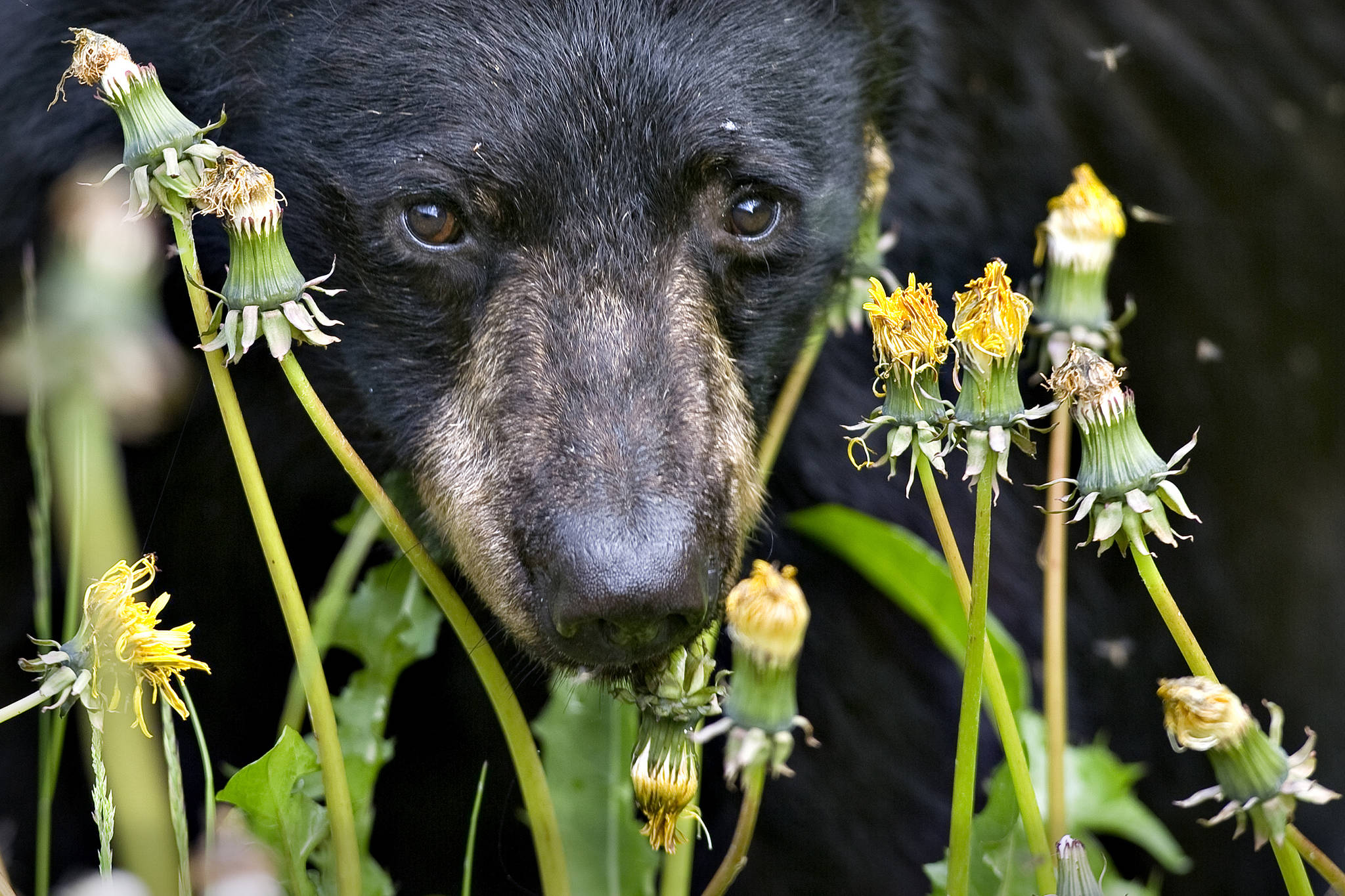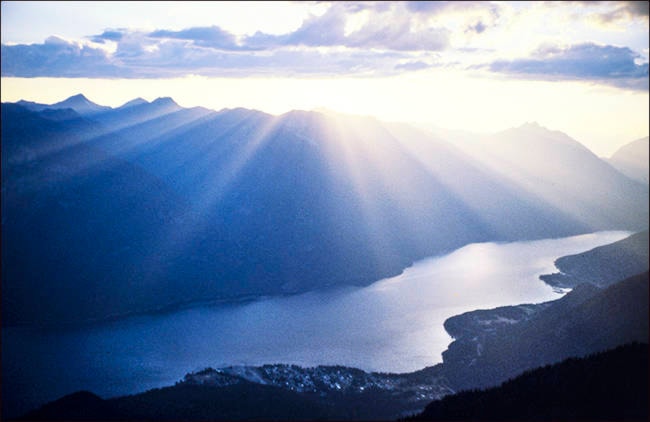Submitted by the Valhalla Wilderness Society - Slocan Valley Bear Smart Program
When Francis Levasseur laced up his jogging shoes and headed out from his friend’s farm in the small, remote West Kootenay community of Hills, he had no idea that his afternoon jog on a secluded Rail-Trail would end up with him clinging for his life up a small tree for two hours while a large black bear patrolled below, determined to have a change to its normal springtime vegetarian diet of grasses and horsetail.
Screaming at the bear did nothing to deter it after it charged him from about 100 metres away after he yelled and waved a stick in the air. It very nearly grabbed him when it climbed a nearby tree as Francis desperately shinnied up the tree that helped save his life.
Fortunately his escape tree was too small for such a large bear to climb.
Once when the bear pretended to leave, Francis came down the tree only to have the bear rush in and try to get him again.
Just as darkness was approaching and he was running out of strength Francis was rescued by the bravery of Mat Phillips, head of the Hills Emergency Services Society (HESS). Phillips happened to step outside his farm house above the Rail-Trail when he heard distant yells for help.
He grabbed his bear spray and machete and with his dog, safely located Francis, drove him home and then reported the incident to the RCMP and Conservation Officers (COs).
The COs said they would not be able to make it until morning.
The rescue was all in a days work for volunteer HESS First Responders, formed by this small remote community nestled in prime grizzly and black bear country at the head of Slocan Lake where residents deal with emergency issues like highway accidents, and forest fires until help arrives, and action with their own house fires.
After the rescue, all seemed okay to Phillips until Francis phoned to say that he had seen an over-turned blue bike further up the Rail-Trail and that there could be another person out there possibly injured or treed by the same bear.
So HESS phoned local bear biologist Wayne McCrory, a former head of HESS, and they decided to investigate as the authorities had still not arrived.
Armed with McCrory’s .12 gauge bear research gun, they went in on Phillips’ ATV and found the supposed bike was a ski-do left out from the winter.
A bear had flipped it over.
McCrory, who had done numerous bear incident site investigations in his career, checked the area where Francis had just been treed and concluded that since he found no moose or other animal carcass that the bear might have been feeding on, and no cubs in the area.
That the bear had pursued Francis as a predator, is something so rare that a study showed that only 56 people had been killed by predaceous black bears in all of North America in over a century since 1900.
Concerned for the safety of others who might also be out on the trail, McCrory and Phillips consulted with the RCMP and then went back and posted unofficial closure signs with bright flagging at either end of the trail.
The COs arrived the next morning but could not locate the bear.
Unfortunately they also could not officially close the trail since that had to be done by Recreation Sites and Trails BC (RSTBC) - the official BC trail authority.
Since it was the long weekend and RSTBC would not be in their office for another two days, this left McCrory and the local trail society to informally post more signage.
The lack of an immediate legal closure did not sit well with McCrory, a bear risk management specialist who has worked on numerous case studies of injurious bear incidents with national park wardens and B.C. provincial parks.
He has since asked the Minister in Victoria to revise the law so that COs have the legal authority to close any Crown lands when a serious bear or other wildlife issue threatens public safety.
As for the lucky and relieved survivor Francis Levasseur: “I am so grateful to Mr. Phillips for rescuing me. I could have died. I will never go out in the bush again without bear spray.”
For further information contact: Wayne McCrory c/o the Valhalla Wilderness Society and Slocan Valley Bear Smart Program via waynem@vws.org or call 250.358.7796.
Interesting Bear Facts:
• Most predaceous and other serious bear attacks can be deterred by properly deploying red pepper bear spray, which a detailed study by renowned bear expert Dr. Stephen Herrero and others has been proven to be more effective than using a firearm.
• According to another study by Dr. Herrero (who wrote part of his famous book Bear Attacks at his farm in Hills) and colleagues, only 56 people have been killed by predaceous black bears in all of North America in over a century since 1900 - an average of less than ½ person per year. Most of these attacks involved adult male black bears and some subadult males.
• In the 19 years from 1986 and 2005, 277 Canadians were killed by lightning - an average of 10 persons per year.

